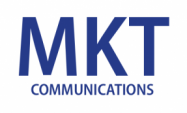As former daily newspaper writers, the MKT Communications team knows both sides well – the editor or reporter working long hours who needs a good hook, and the PR person looking for ways to get their client some press.
While PR people and journalists work as polar opposites, they are both a necessary cog in the delivery of stories and images to readers, TV/radio audiences and online. Historically, neither side has strayed too close to the other in the interest of protecting media bias, real or perceived. The two sides rarely socialized, shared personal stories or discussed work projects outside of a particular assignment or story idea.
But times have changed and so has the media, compelling writers and communications people to work more collaboratively. Both sides have come to the realization that at the end of the day, their aims are generally pretty much the same: to get ink (or re-tweets).
If you’re a business person looking to do your own PR, you may want to read on. Below are 6 tips we’ve used many times over the years to help bridge the gap between journos and PR pros, all of which can prevent you from making some common PR blunders:
1. Be strategic. Sending a gardening magazine a pitch about your client – who you’re proud to say is about to be the next WWF superstar – is a surefire way to land in an editor’s Blocked mailbox for any future releases. The reality is different journalists have different beats and they tend to gravitate towards certain stories. Identify the media working in your target market and focus on those few that may actually have the potential to run your story, rather than spreading your communications around randomly.
2. Get to know local media. Not just the writer whose byline you see most often in your local daily paper, but the bloggers and other social media mavens who’ve developed a loyal and broad following. Invite them for coffee and find out who they write for or what they write about. Follow them online or go to networking events you think they may be attending. Keep them up to speed on clients you think are a good fit for their audience.
If you invite writers to sample your restaurant’s East Indian specialties,
make sure burgers aren’t on the lunch menu that day.
3. Deliver what you promise. If you invite writers to sample your restaurant’s East Indian specialties, make sure burgers aren’t on the lunch menu that day. Otherwise, you won’t get the coverage you seek, and you’ll hurt your own financial investment.
4. Don’t be a media hound. The writer who spent several hours a month ago learning about your client over lunch will more than likely write a story about you. Unless you have reason to believe otherwise, trust that the writer is working on selling the story. Follow up, but do not nag.
5. Be proactive and flexible. Stay on top of local issues, so when a topic arises that your client has expertise with, you can offer an interview opportunity or other way to leverage their voice on the news of the day. Also, be flexible. The editor may not like your initial pitch and suggest another angle. Always be willing to change your story up slightly provided it suits your business needs or better yet, ask the editor/writer what they’re working on and see how your client might be able to fit in.
6. Get to know the publication. Craft your pitch suit the needs of your target media. Perhaps that garden magazine has a profile section on quirky gardeners? Editors love businesses – or their PR people – who take the time to get to know their publications.





